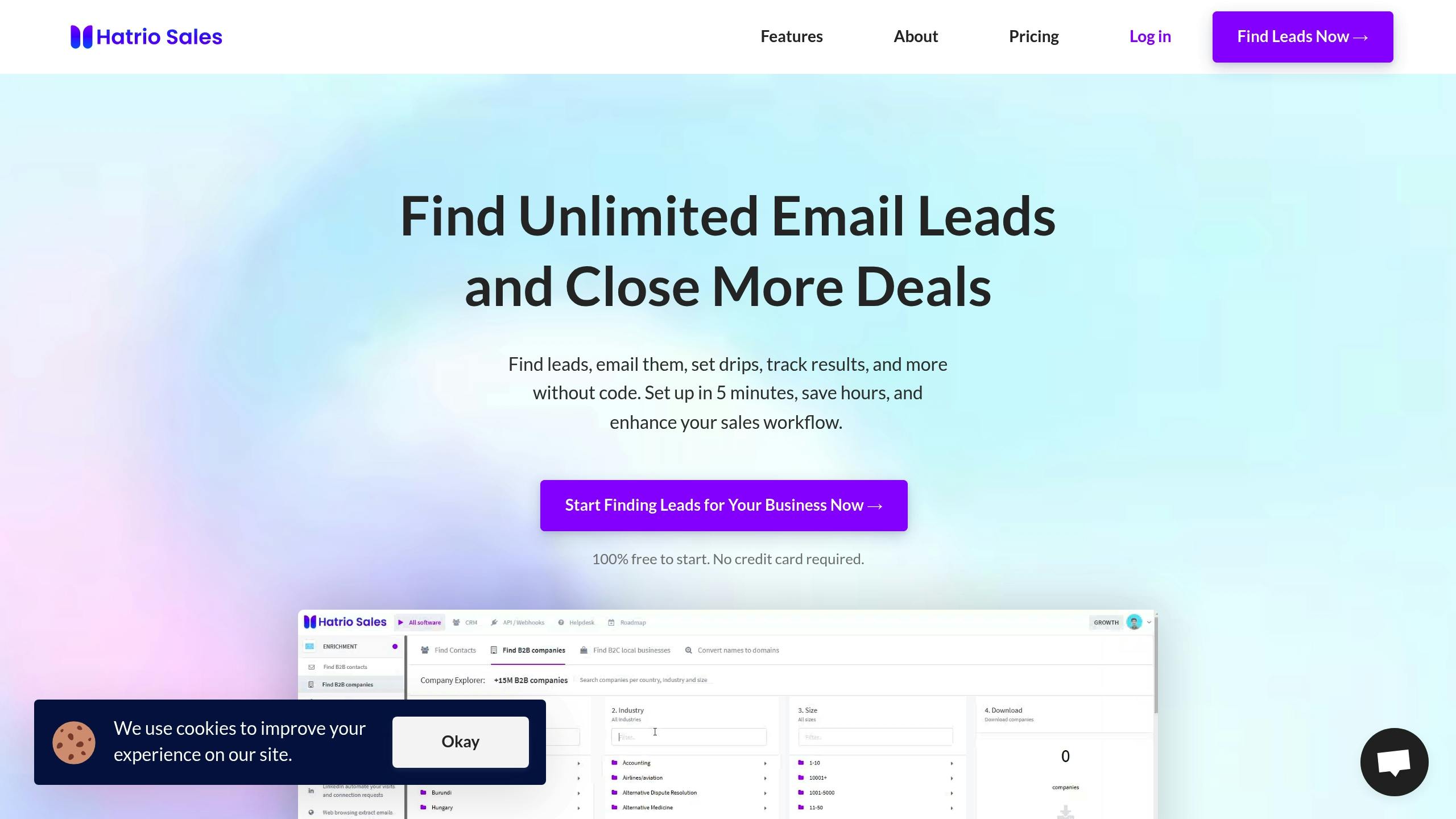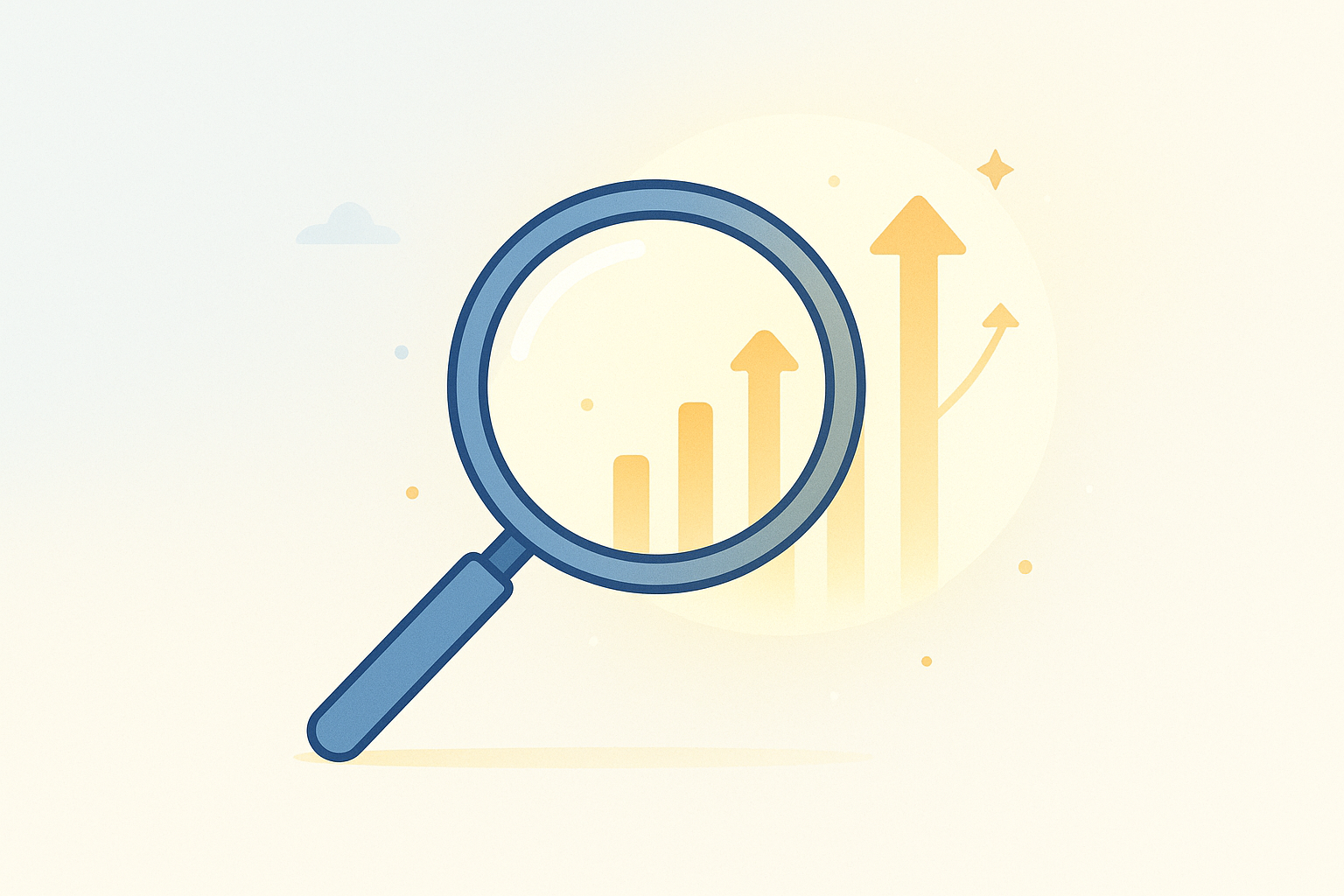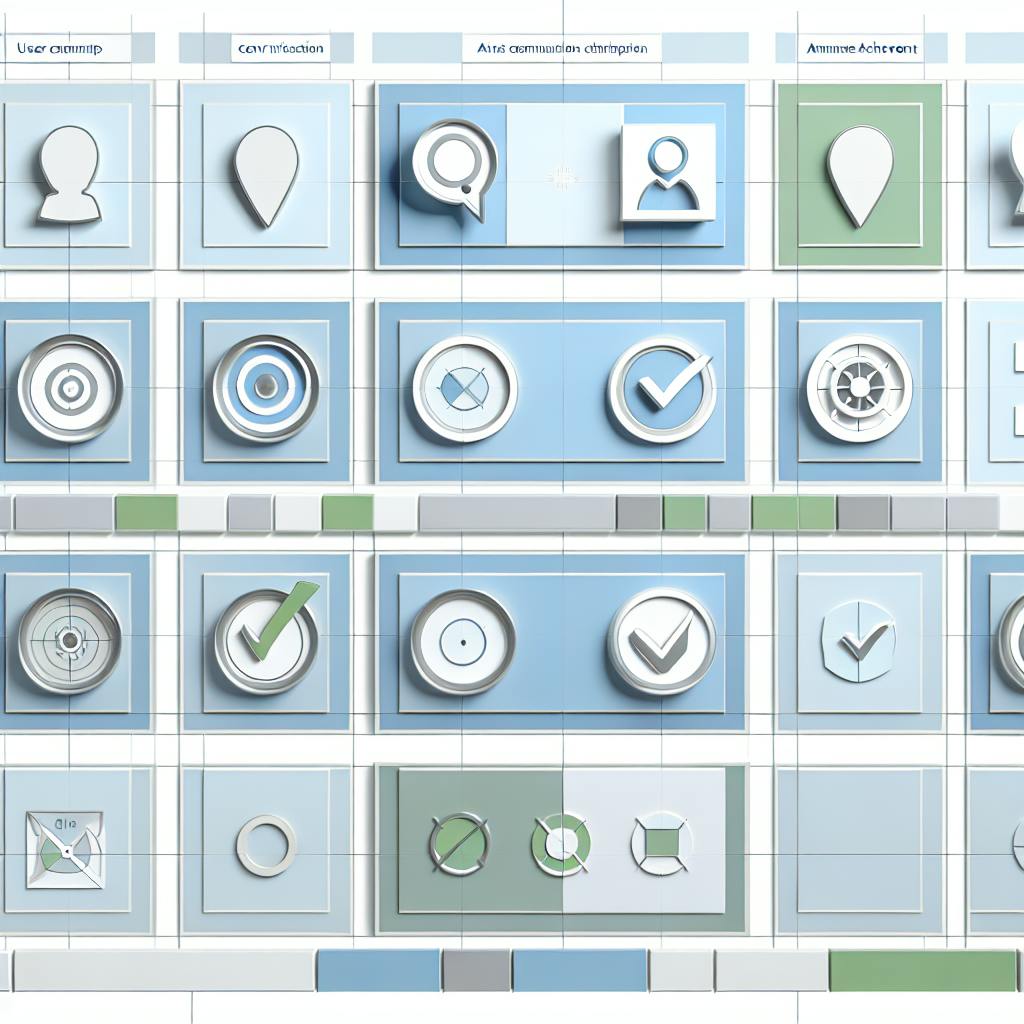Predictive analytics helps businesses understand their customers better and improve Customer Lifetime Value (CLV) segmentation. Here's how it works:
- What is CLV? CLV measures the total revenue a customer brings during their relationship with a business. It helps guide strategies for acquiring and retaining customers.
- How predictive analytics helps: By analyzing past customer data, predictive analytics forecasts future behaviors, enabling smarter decisions.
- Key benefits:
- Automates lead scoring to prioritize valuable prospects.
- Enables targeted marketing campaigns tailored to customer segments.
- Optimizes resources by focusing on high-value customers.
Quick Overview of Steps:
- Data Collection: Gather transaction history, customer profiles, and engagement metrics.
- Data Preparation: Clean, enrich, and integrate data for accuracy.
- Model Creation: Use regression or machine learning models to predict CLV.
- Segmentation: Group customers into tiers (e.g., Premium, Core) based on predicted CLV.
- Marketing Strategy: Tailor campaigns to each segment and allocate budgets effectively.
Tools like Hatrio Sales simplify this process by automating data collection, lead scoring, and campaign management, making it easier to maximize customer value and drive growth.
Data Collection and Preparation
Required Data Types
To predict CLV accurately, you need data from different touchpoints. These data points fall into three main categories:
| Data Category | Required Information | Purpose |
|---|---|---|
| Transaction Data | Purchase history, order values, frequency | Identify spending patterns |
| Customer Profile | Demographics, location, company size | Build detailed customer segments |
| Engagement Metrics | Email responses, website visits, social interactions | Gauge relationship strength |
Hatrio Sales simplifies this process by automating data collection across various channels. Once collected, the data needs to be cleaned and integrated systematically to ensure accurate CLV predictions.
Data Processing Steps
Turning raw data into meaningful insights is critical for effective CLV prediction. Here's how to do it:
-
Data Collection
Collect data from multiple sources. Hatrio Sales streamlines this by:- Extracting LinkedIn contact information
- Verifying email addresses
- Enriching leads with additional details
- Compiling comprehensive profiles
-
Data Cleaning
Clean the data to remove:- Duplicate entries
- Incomplete records
- Outdated contact information
-
Data Enrichment
Add extra details to enhance customer profiles, such as:- Company size and industry
- Job titles
- Social media activity
- Website information
-
Data Integration
Hatrio Sales ensures consistency by standardizing data formats, merging records, and providing real-time updates.
Clean, well-organized data is the foundation for accurate CLV predictions and precise customer segmentation.
Predictive segmentation based on customer transactions and ...
Creating CLV Prediction Models
Using clean and well-organized data, select methods that align with your business objectives. Combine techniques like statistical analysis and machine learning to develop reliable CLV (Customer Lifetime Value) prediction models.
Prediction Methods
Statistical Regression Models
Regression analysis helps evaluate factors such as historical purchase frequency, average order value, expected customer lifespan, and churn likelihood.
Machine Learning Approaches
For more complex customer behavior, machine learning models offer improved precision. Hatrio Sales uses advanced algorithms to analyze diverse datasets and uncover intricate patterns:
| Model Type | Best Used For | Key Advantages |
|---|---|---|
| Random Forest | Large datasets with many variables | Manages missing data effectively, limits overfitting |
| Gradient Boosting | Complex purchase behaviors | Delivers high precision, captures non-linear trends |
| Neural Networks | Real-time predictions | Adapts to dynamic customer behavior |
Once built, these models must be tested to ensure their predictions are dependable.
Model Testing
1. Data Splitting
Separate your customer data into three distinct sets:
- 60% for training the model
- 20% for validation
- 20% for final testing
2. Accuracy Metrics
Use these metrics to measure performance:
- Mean Absolute Error (MAE)
- Root Mean Square Error (RMSE)
- R-squared value
3. Validation Process
Compare model predictions with actual customer behavior. Hatrio Sales simplifies this step by:
- Monitoring prediction accuracy in real-time
- Adjusting models as new data becomes available
- Highlighting major deviations for further review
4. Model Refinement
Fine-tune your models based on testing results:
- Modify feature weights
- Reassess variable selection
- Adjust hyperparameters for better performance
Hatrio Sales's lead scoring system integrates these updates automatically, ensuring the models stay accurate over time.
sbb-itb-b22f30c
CLV-Based Customer Groups
Divide your customers into groups based on their predicted Customer Lifetime Value (CLV) to fine-tune marketing efforts and allocate resources where they matter most.
Setting Group Boundaries
Use predicted CLV values to create clear customer segments. Hatrio Sales' lead scoring system simplifies this process by analyzing past transactions and customer behavior patterns.
Value-Based Tiers
Organize your customer base into tiers with defined monetary ranges:
| Segment | CLV Range | Characteristics |
|---|---|---|
| Premium | >$50,000 | Frequent buyers, high order values, and strong loyalty to your brand |
| Core | $10,000-$50,000 | Steady purchasers with moderate basket sizes and consistent engagement |
| Growth | $1,000-$9,999 | Occasional buyers showing varied levels of interaction |
| Basic | <$1,000 | Rare purchasers with minimal engagement |
Dynamic Thresholds
Adjust these ranges as needed to align with your industry standards, business goals, or shifts in customer behavior. Regularly updating thresholds ensures your segments remain relevant and actionable.
Segment Analysis Tools
Once your groups are set, leverage analytical tools to understand their behaviors and performance. Hatrio Sales offers a suite of features designed to provide actionable insights.
Behavioral Analysis
Examine critical metrics for each segment, such as:
- Purchase frequency
- Average order value
- Product preferences
- Marketing response rates
- Customer service interactions
Segment Performance Dashboard
A centralized dashboard lets you track key trends like growth, churn risk, cross-sell opportunities, and changes in CLV over time.
Hatrio Sales' analytics help uncover:
- Shared traits within each group
- Factors driving customers to shift between segments
- Early indicators of potential churn or growth
- Opportunities to boost customer value
These insights empower you to tailor strategies for each segment, ensuring you maximize their potential while efficiently distributing resources across your customer base.
Marketing with CLV Segments
Use predictive CLV (Customer Lifetime Value) insights to create targeted campaigns and make smarter decisions about where to allocate your resources. These focused messages help streamline resource use and track performance effectively.
Segment-Specific Messages
Tailor your content to meet the unique needs of each customer segment. Automated systems can make this process easier by customizing campaigns for you.
Here are some examples:
- Premium: Provide early access to products, personalized recommendations, and enhanced services to emphasize exclusivity.
- Core: Promote loyalty rewards, cross-sell opportunities, and key product benefits to maintain engagement.
- Growth: Encourage interaction with product discovery campaigns, helpful tips, and time-sensitive offers.
Budget Planning
Distribute your marketing budget wisely by focusing on the potential value of each customer segment. Invest more in high-value segments while using cost-efficient methods like drip campaigns to nurture leads.
Where to Focus: Direct the largest portion of your marketing budget to segments with strong growth potential. Automated workflows can help maintain engagement with these customers throughout your campaigns.
Measuring Success
Track key performance indicators (KPIs) to assess how well your segmented campaigns are working. Hatrio Sales offers analytics tools to help you monitor performance across all your customer groups.
Key metrics to consider include:
- Migration rates, showing how customers move into higher-value segments
- Campaign response rates and overall customer engagement
- Shifts in purchase frequency and average order value
- ROI (Return on Investment) for each specific segment
Hatrio Sales CLV Features

Hatrio Sales makes customer segmentation by lifetime value (CLV) straightforward and effective. The platform simplifies how businesses identify, track, and engage with their customers by offering tools that deliver actionable insights in real-time.
Lead Scoring System
Hatrio Sales uses an automated lead scoring system to categorize customers based on their lifetime value. By analyzing engagement and behavior across various touchpoints, the platform provides precise insights. Key scoring factors include:
- Purchase pattern analysis
- Campaign engagement metrics
- Indicators of customer value
- Predictive behavior trends
Sales Campaign Tools
With Hatrio Sales, teams can create tailored sales campaigns using a database of over 1.5 billion data points, including profiles for more than 100 million companies worldwide. This allows for highly focused and effective outreach.
Highlighted features:
- Automated drip campaigns for sales
- Custom follow-up sequences
- Campaign analytics for performance tracking
- Multi-channel outreach options
Customer Data Management
Hatrio Sales consolidates customer data into a single, organized dashboard, making CLV segmentation simpler and more efficient. By integrating multiple data sources, the platform provides a complete view of each customer, aiding in better decision-making.
Key functions:
- Tracking transitions between customer segments
- Analyzing purchase behaviors
- Monitoring campaign responses
- Automatically enriching customer profiles
The system processes data like social profiles, company details, and domain information to turn them into qualified leads, ensuring that CLV-based strategies are both effective and data-driven.
Conclusion
Predictive analytics is changing the game for businesses when it comes to CLV segmentation. It allows for sharper customer targeting and stronger revenue results by using advanced data analysis to automate lead scoring, improve customer profiles, and design better sales campaigns.
Here’s how predictive analytics and CLV segmentation work together to deliver results:
- Automated Lead Scoring: Predictive models analyze user activity and engagement to rank leads, helping sales teams concentrate on high-potential prospects.
- Richer Customer Data: Modern tools gather details like social profiles, company data, and website behavior, creating detailed customer profiles for smarter segmentation.
- Simplified Sales Workflows: Automation tools handle repetitive tasks like drip campaigns, freeing up time while keeping customer interactions personalized.
Hatrio Sales users have shared how these features revolutionize their sales processes, from verifying emails and enriching profiles to seamlessly integrating leads into targeted campaigns. With over 104,000 websites relying on Hatrio Sales, it's clear that data-driven CLV segmentation is a powerful tool for building stronger customer relationships and boosting growth.
As predictive analytics continues to evolve, businesses will find even more ways to refine their sales strategies and achieve better results.



